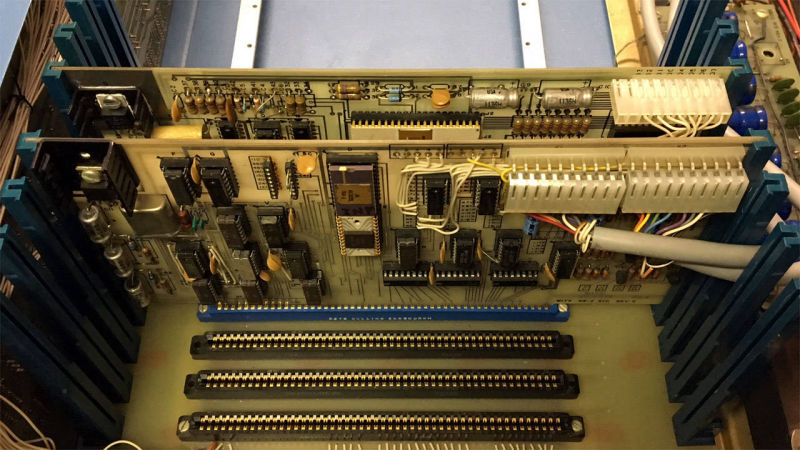The Altair 680b began shipping in early 1976 and uses the Motorola 6800 processor instead of the Intel 8080 used in the Altair 8800. The 680b is housed in a much smaller cabinet than the 8800 computer. Despite having a front panel that looks similar to the 8800's, the front panel functions are extremely limited – to the point of being little more than a decoration.
The 680b had several painful short comings: The front panel limitations, being hobbled to run at 1/2 the normal speed of 6800 processor, and using Motorola S-Record format to load BASIC and the assembler/editor package. The latter resulted in load times of over 30 minutes for BASIC and the assembler.
The base system shipped with 1K of RAM, a 256 byte PROM monitor (1K of PROM space provided on the main board), and a serial port with RS-232 or current loop interface options. An expansion slot accepted a three-slot riser that allowed adding up to three expansion boards. A second transformer had to be added in parallel to the original transformer in order to support more than 1 expansion board.
Expansion boards included a 16K static RAM board, a cassette interface board, a parallel and serial interface board, and a couple of process control boards. A disk drive option based on the 5.25" Mini Disk being designed for the 8800 was in the works, but that project was cancelled during the Pertec take-over of MITS. In the end, there was no off-the-shelf disk drive option for the Altair 680b.
To learn more about this machine, watch
these videos.
 Front View
Front View Internal View
Internal View 88-2SIO and CPU Boards
88-2SIO and CPU Boards Power Supply
Power Supply